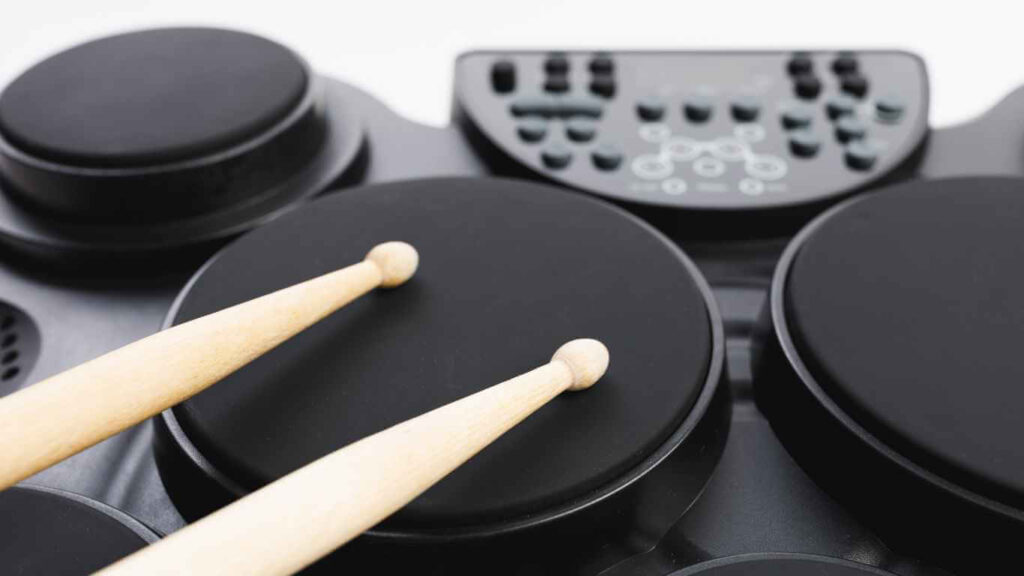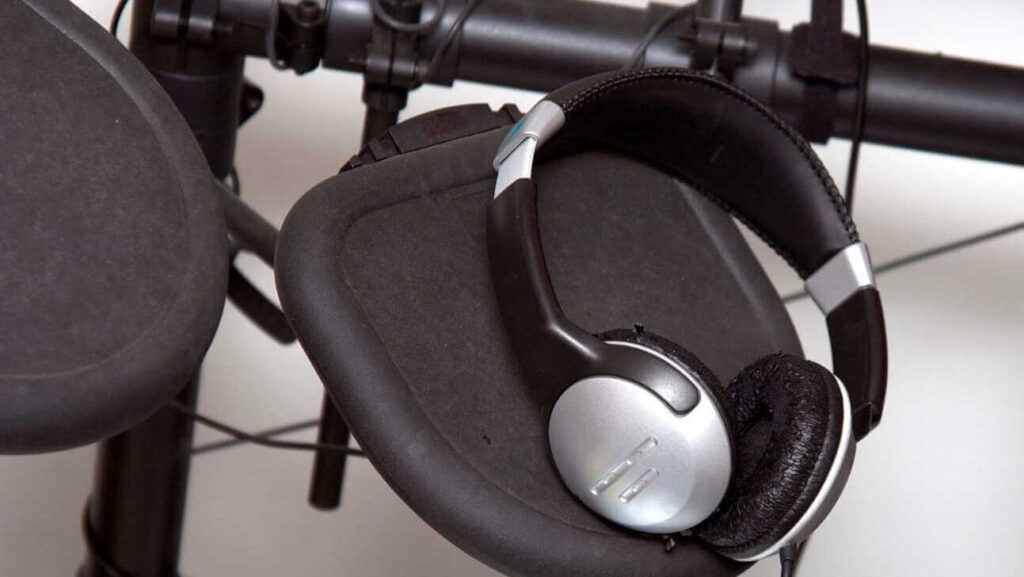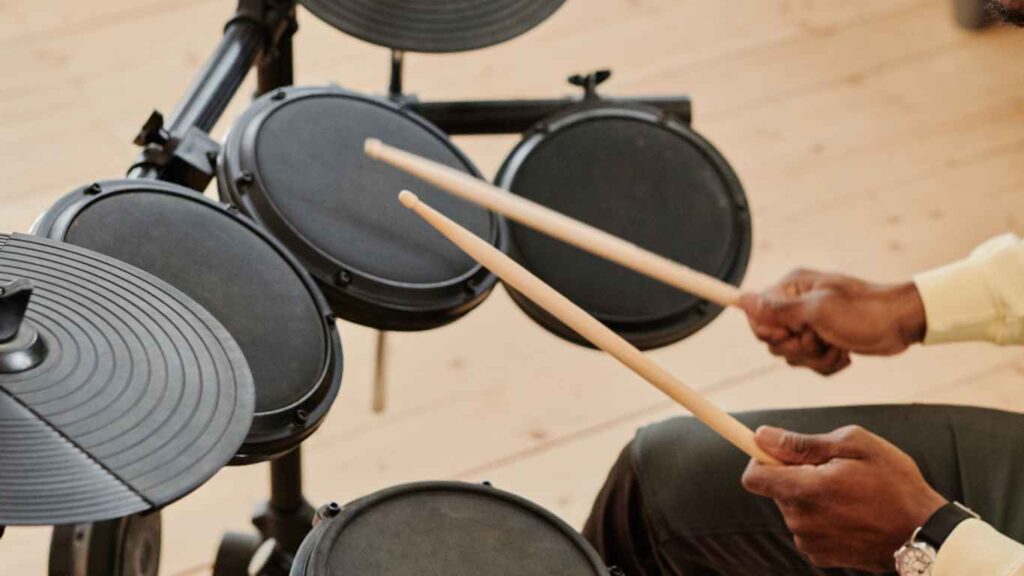Hello rhythm enthusiasts! It’s Ron here, your drum and percussion guide. Today, we’re tapping into an intriguing question: Are electronic drums good for practice? This topic has drummed up plenty of debates, and it’s time to dissect the pros, cons, and everything in between. Whether you’re a beginner beating your first roll or a seasoned drummer perfecting complex rhythms, this post will guide you through the digital drumming landscape. So, let’s dive into the world of electronic drums and discover if they’re the secret ingredient to upscaling your practice sessions!
The Evolution of Electronic Drums
The story of electronic drums is a remarkable one, marked by constant innovation and adaptation. In the 1970s, when electronic drums first emerged, they were viewed as novel but limited alternatives to acoustic drums. These early models often suffered from unrealistic sounds and lacked the nuanced response of their acoustic counterparts. But they set the stage for what was to become a significant evolution in drumming technology.
Over the years, electronic drums underwent a transformation. The 1980s and 1990s saw significant advancements, with companies introducing kits that offered better sound quality and more realistic playing experiences. These developments were crucial in changing the perception of electronic drums from mere electronic toys to serious musical instruments.

Modern Marvels of Drumming Technology
Today, electronic drum kits stand at the forefront of drumming technology. They come equipped with advanced features that were unthinkable in the early years. Modern electronic drums boast highly responsive pads and cymbals, sophisticated sound modules with extensive libraries of sounds, and even the ability to mimic the unique characteristics of acoustic drums.
The development of mesh head technology has been a game-changer in this evolution. These heads provide a playing feel much closer to traditional drum skins, offering a realistic rebound and stick response. This innovation has significantly closed the gap between electronic and acoustic drumming experiences.
Integration with Digital Technology
One of the most significant aspects of the evolution of electronic drums is their integration with digital technology. Modern electronic kits can connect to computers and other devices, allowing for a range of functionalities like digital recording, sound customization, and integration with educational software. This connectivity has not only enhanced the practice experience but also opened up new avenues for creativity and performance.
Expanding Sound Capabilities
The sound modules of today’s electronic drums are marvels in their own right. They offer an expansive range of sounds, from classic acoustic kits to various world percussion instruments. Drummers can now access and switch between an array of drumming styles and sounds at the touch of a button. This versatility has made electronic drums appealing to a broader range of musicians, extending beyond traditional drummers to include producers and electronic music artists.
Advantages of Practicing on Electronic Drums
The ability to control volume is one of the most significant advantages of electronic drums, particularly for those living in close quarters.
- Headphone Use: With electronic drums, you can practice at any hour without causing a disturbance by using headphones. This is invaluable for drummers who need to be mindful of neighbors or family members.
- Adjustable Volume: Unlike acoustic drums, you can adjust the volume of electronic drums. This allows for practice at lower volumes, which is beneficial for hearing protection and can be less overwhelming for beginners.

Diverse Sound at Your Fingertips
Electronic drums offer a wide range of sounds and drum kits, all within one set-up.
- Variety of Kits: With the press of a button, you can switch between different drum kits, from a standard rock set to a jazz kit, or even ethnic percussion. This variety is not only fun but also educational, exposing you to different drumming styles.
- Sound Customization: Beyond preset sounds, many electronic kits allow you to customize and create your own kits. You can tweak individual drum sounds, adjust pitch, add effects, and more, which is a great way to explore and understand sound dynamics.
Recording and Feedback
Modern electronic drum kits often come with recording capabilities, providing significant benefits for practice.
- Self-Assessment: Recording your playing is a powerful tool for self-assessment. Listening back to your sessions can reveal areas of improvement and track your progress over time.
- Playing Along to Music: Many kits allow you to connect an external device to play along with your favorite songs. This not only makes practice more enjoyable but also helps in developing timing and rhythm.
Space and Portability
Electronic drums are space-efficient and portable, making them ideal for small living spaces and frequent movers.
- Compact Size: Most electronic drum kits have a smaller footprint compared to acoustic kits, making them suitable for tight spaces.
- Ease of Transport: Electronic drums can be easily dismantled and transported, ideal for musicians who travel or need to move their practice space regularly.
Learning and Interactive Features
Electronic drums often come with built-in learning tools and can connect to educational software.
- Built-In Tools: Features like metronomes, play-along tracks, and drumming games can make practice sessions more effective and engaging.
- Connectivity with Educational Apps: The ability to connect to apps and software opens up a world of interactive learning opportunities, from online lessons to virtual drumming communities.
How Do They Stack Up Against Acoustic Drums?
The tactile experience of playing drums is a crucial aspect of the instrument, and this is where electronic and acoustic drums differ significantly.
- Rebound and Stick Response: One of the main differences is in the rebound and stick response. Acoustic drums have a natural feel that comes from the tensioned drum skins, which electronic drums try to emulate. While high-end electronic drums with mesh heads come close, they still don’t fully replicate the nuanced response of acoustic drum skins, especially in terms of stick rebound and sensitivity to different playing techniques.
- Physical Layout and Size: Acoustic drums offer more flexibility in terms of setup and customization. Drummers can adjust the height, angle, and distance of each drum and cymbal to their preference, which can be somewhat limited in electronic drum kits due to their more fixed structure.
Sound and Expression
The sound and expressiveness of a drum kit are critical for both practice and performance, and each type of drum offers unique advantages.
- Dynamic Range and Expression: Acoustic drums are renowned for their dynamic range and expressiveness. The way they respond to different playing intensities, from soft ghost notes to powerful accents, provides a level of control that is essential for certain music styles. Electronic drums, although improving, often have a narrower dynamic range and may not capture every subtle nuance of a drummer’s playing.
- Sound Authenticity: While electronic drums offer a wide variety of sounds, they are essentially digital samples. High-quality electronic kits have advanced sampling technology that sounds incredibly realistic, but they can still lack the organic, raw sound that acoustic drums produce.
Adapting Technique for Electronic Drums
For drummers accustomed to acoustic kits, adjusting to electronic drums can require some adaptation in technique.
- Adjusting to Different Rebounds: Playing on electronic drums might require a slight adjustment in playing technique, especially for drum rolls or fast-paced beats, due to the different rebound characteristics of the pads.
- Learning to Exploit Electronic Features: On the flip side, electronic drums offer unique features like sound layering or effects triggering, which can inspire new playing techniques and creative exploration.
The Learning Curve
For beginners who start on electronic drums, transitioning to acoustic drums later can involve a learning curve.
- Transitioning to Acoustic Feel: Beginners who learn on electronic drums might initially find the transition to acoustic drums challenging, particularly in terms of adjusting to the feel and responsiveness of acoustic drum heads and cymbals.
- Transferring Skills: However, fundamental skills such as timing, coordination, and rhythm learned on electronic drums are transferable and form a solid foundation for playing acoustic drums.
The Practical Side of Electronic Drum Practice
Space-Saving and Setup Simplicity
Electronic drums are well-known for their space efficiency, making them particularly suitable for various living environments.
- Compact and Non-invasive: Unlike acoustic drums that can take up a significant amount of space, electronic drum kits often have a more compact footprint. This is a boon for drummers living in small apartments or shared spaces, where conserving space is essential.
- Ease of Assembly and Disassembly: Electronic drum kits can be quickly assembled or dismantled, which is a great advantage for those who may need to pack away their kit after practice. This feature is also beneficial for educators or performers who frequently travel with their kit.
Recording and Feedback
The ability to record and play back sessions is a standout feature of electronic drums that greatly aids in practice and self-improvement.
- Immediate Playback and Analysis: Many electronic drum kits come with built-in recording capabilities, allowing drummers to record their playing and listen back to it immediately. This is an excellent tool for self-assessment, helping drummers identify areas of strength and those needing improvement.
- Integration with Educational Tools: The connectivity of electronic drums with computers and smartphones opens up opportunities to use various educational apps and software. This integration can enhance the learning experience, providing interactive tutorials, rhythm games, and even virtual lessons. v
Headphone Usage for Quiet Practice
The ability to practice quietly is one of the most valued aspects of electronic drums, especially in noise-sensitive environments.
- Private Practice: By plugging in headphones, drummers can practice in complete privacy without disturbing others. This feature is invaluable for late-night practice sessions or in settings where noise could be an issue, like apartment buildings.
- Hearing Protection: Practicing with headphones at a controlled volume can also be beneficial for hearing protection, as drummers can avoid the high decibel levels often produced by acoustic drums.
Cost-Effectiveness Over Time
While the initial investment in an electronic drum kit can be significant, there are long-term cost benefits to consider.
- Low Maintenance: Electronic drums generally require less maintenance than acoustic drums. There are no skins to replace, and the electronic components, if well-cared-for, can last a long time without needing repairs or replacements.
- Versatility Reduces Additional Costs: The ability of electronic drums to mimic a range of percussion sounds and kits reduces the need for purchasing additional equipment. This all-in-one aspect can be more cost-effective over time, especially for beginners who are exploring different sounds and styles.
Adapting to Various Musical Styles
Electronic drums provide the flexibility to practice a wide array of musical styles, which is beneficial for developing a well-rounded skill set.
- Exploring Different Genres: With the press of a button, drummers can switch between different drum sounds and styles, from rock and jazz to electronic and world music. This versatility is not only engaging but also educates drummers in various styles.
- Customization for Personal Style: Electronic kits allow for customization of drum sounds and kits, enabling drummers to create a setup that aligns with their personal style and the specific requirements of the music they are playing.

Considerations for Drummers
Starting Out on Electronic Drums
For beginners, starting on electronic drums can be a great choice, but there are several factors to keep in mind.
- Understanding the Basics: While electronic drums are user-friendly, it’s important for beginners to get a solid grasp of the basics of drumming. This includes understanding rhythm, timing, and drumming techniques, which are fundamental regardless of the type of drum kit used.
- Selecting the Right Model: Beginners should seek electronic drum kits that are beginner-friendly, offering intuitive interfaces and essential features without overwhelming complexity. Look for kits with good sound quality, responsive pads, and durability, all within a reasonable budget.
Balancing Practice on Both Types of Drums
For those with access to both electronic and acoustic drums, balancing practice between them can be beneficial.
- Adaptability: Practicing on both types of drums can help in developing adaptability as a drummer. Each type offers a unique playing experience, and being comfortable with both can be a valuable skill, especially for those planning to perform or record professionally.
- Translating Skills: While the fundamental skills learned on electronic drums are transferable to acoustic drums, it’s important to regularly practice on acoustic drums to get accustomed to their feel and responsiveness. This ensures a smoother transition during performances or studio sessions.
Incorporating Technology in Learning
Electronic drums offer various technological features that can significantly enhance the learning experience.
- Use of Learning Software: Take advantage of the connectivity of electronic drums to educational software and apps. These tools can offer interactive lessons, track your progress, and make practice more engaging.
- Feedback Mechanisms: Use built-in features like metronomes, recording capabilities, and play-along tracks to improve timing, rhythm, and overall playing skills. These feedback mechanisms are particularly useful in honing your skills and assessing your progress.
Understanding the Limitations and Advantages
It’s crucial for drummers to be aware of both the limitations and advantages of electronic drums.
- Limitations: Recognize that while electronic drums are excellent for practice, especially in terms of volume control and space-saving, they may not fully replicate the acoustic drumming experience. This includes differences in stick rebound, sound dynamics, and the physical layout of the kit.
- Advantages: On the other hand, the advantages of electronic drums, such as the ability to practice quietly, access a variety of sounds, and use digital learning tools, make them a highly practical and versatile choice for drummers at all levels.
Long-Term Considerations
Thinking long-term is important for drummers considering electronic drums.
- Future Transitions: If you plan to transition to or incorporate acoustic drums in the future, consider practicing occasionally on an acoustic set to familiarize yourself with its feel and response.
- Investment and Upgradeability: Consider the investment in your electronic drum kit. Some models offer upgradeability, which can be a cost-effective way to enhance your kit as your skills improve.
In conclusion, when considering electronic drums, it’s important to weigh their practical benefits against the unique qualities of acoustic drums. For beginners, they offer a fantastic starting point, and for more experienced drummers, they provide an excellent means to practice and expand their repertoire. Understanding and leveraging the strengths of electronic drums while being mindful of their differences from acoustic drums will ensure a well-rounded and effective drumming practice.




